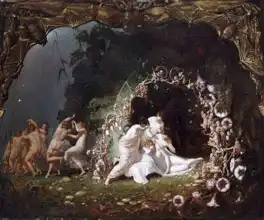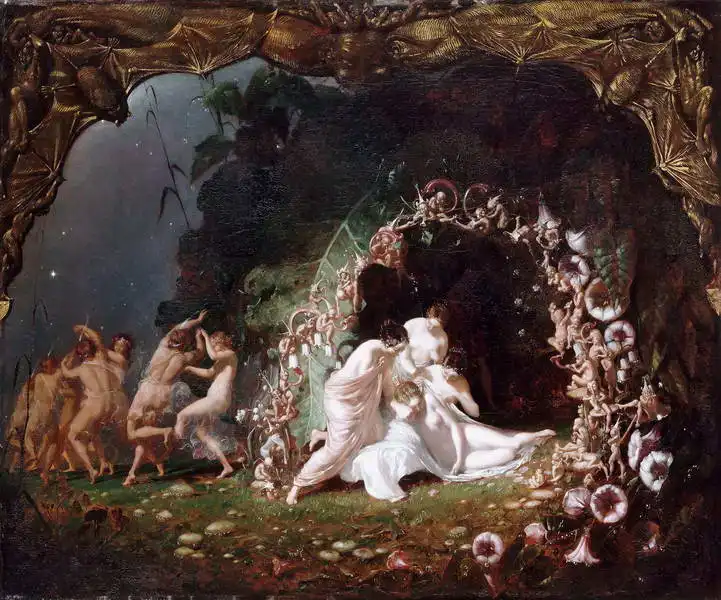About this finishing
Print. The image is printed on the top quality 10-ink HP Z9PS printer on HP matte 270 g / m2 paper. You can choose any size to an accuracy of 1 cm. A margin of 5 cm around the image is added to the size of the motif.


You can find a detailed description about our finishings
here.
Titania sleeping
The painting depicts a mythological scene in a night forest with fantastic elements. A group of figures can be seen in the foreground, one of whom is seated in white clothing, giving the impression of elegance and tranquility. Other figures are dancing and appear to be in motion. Flowers are scattered around the entrance to the cave and mushrooms are growing. The entire scene is framed by an ornate frame containing vegetative motifs and fantastical creatures, giving the work a mysterious and dreamlike quality.
This description was created by artificial intelligence, please be indulgent.
Prevailing color of this fine art print is dark and its shape is landscape. This image is printed on demand - you can choose material, size and finishing.
Richard Dadd (1817-1886), a < British a href=fine-art-prints/classicism> Classicist Victorian painter who painted supernatural and mystical oriental scenes. Dadd’s father was a chemist, but Richard showed talent for painting early on. He graduated from the Royal Academy of Arts. Initially, he illustrated books, but in 1842 he was chosen to accompany Sir Thomas Phillips on the road to Greece, Egypt and Turkey. This expedition became crucial for Richard. His personality was change. He began to hallucinate and was unreasonably aggressive. He even believed that the god Osiris spoke through him. On the road, he painted
Escape from Egypt and
Caravan Haven in Asia Minor. After returning, he killed his father, whom he considered the devil. Captured and classified as mentally ill, he was moved to a psychiatric hospital. Painting his ideas and thoughts helped in his treatment. After 20 years, he went from the psychiatric hospital to a hospital, where he painted until his death due to pneumonia. His most famous painting, The Fairy Feller, inspired a song of the British pop group Queen and a novel by popular, now recently deceased, British fantasy writer Terry Pratchett.


